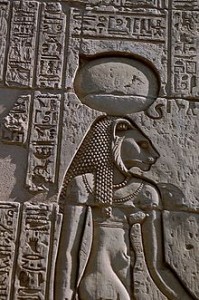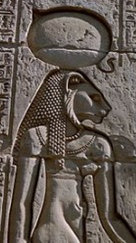 Worlds in Collision (1950) and Earth in Upheaval (1955) set forth the evidence and arguments for Immanuel Velikovsky’s pioneering, controversial theory that Venus emerged from Jupiter as a comet and repeatedly approached Earth, causing the Bronze Age catastrophes. Kenneth J. Dillon and Stephen J. Dillon discuss these books and the Scientific Rejectionism that stigmatized Velikovsky, thwarting a full, balanced assessment of his theories ever since.
Worlds in Collision (1950) and Earth in Upheaval (1955) set forth the evidence and arguments for Immanuel Velikovsky’s pioneering, controversial theory that Venus emerged from Jupiter as a comet and repeatedly approached Earth, causing the Bronze Age catastrophes. Kenneth J. Dillon and Stephen J. Dillon discuss these books and the Scientific Rejectionism that stigmatized Velikovsky, thwarting a full, balanced assessment of his theories ever since.
![]() 10-05 ver.3.mp4
10-05 ver.3.mp4
Tags: Bronze Age catastrophes, Earth in Upheaval, earth science, history of science, Immanuel Velikovsky, interpretation of myths, planetary science, scientific rejectionism, the Reversing Earth, Worlds in Collision
 In his Worlds in Collision (New York: Macmillan, 1950), Immanuel Velikovsky argued that Venus emerged as a red-hot comet from Jupiter and passed Earth every 52 years, causing the Bronze Age catastrophes, before settling into its current orbit. His claim set off a controversy in which his theory was rejected and stigmatized. But over the years, new findings have changed the picture. Here are eight new reasons to accept a Revised Venus Theory.
In his Worlds in Collision (New York: Macmillan, 1950), Immanuel Velikovsky argued that Venus emerged as a red-hot comet from Jupiter and passed Earth every 52 years, causing the Bronze Age catastrophes, before settling into its current orbit. His claim set off a controversy in which his theory was rejected and stigmatized. But over the years, new findings have changed the picture. Here are eight new reasons to accept a Revised Venus Theory.
Tags: Archer Yi, Athena, Bronze Age catastrophes, catastrophism, earth science, Immanuel Velikovsky, interpretation of myths, Martian Theory of Mass Extinctions, Metis, Outer Solar System Origin of the Terrestrial Planets, planetary science, Poseidon, Revised Venus Theory, The Knowable Past, Theory of the Reversing Earth, tidal theory of the planets, Worlds in Collision
 Worlds in Collision (1950) and Earth in Upheaval (1955) set forth the evidence and arguments for Immanuel Velikovsky’s pioneering, controversial theory that Venus emerged from Jupiter as a comet and repeatedly approached Earth, causing the Bronze Age catastrophes. Kenneth J. Dillon and Stephen J. Dillon discuss these books and the Scientific Rejectionism that stigmatized Velikovsky, thwarting a full, balanced assessment of his theories ever since.
Worlds in Collision (1950) and Earth in Upheaval (1955) set forth the evidence and arguments for Immanuel Velikovsky’s pioneering, controversial theory that Venus emerged from Jupiter as a comet and repeatedly approached Earth, causing the Bronze Age catastrophes. Kenneth J. Dillon and Stephen J. Dillon discuss these books and the Scientific Rejectionism that stigmatized Velikovsky, thwarting a full, balanced assessment of his theories ever since.
 In his Worlds in Collision (New York: Macmillan, 1950), Immanuel Velikovsky argued that Venus emerged as a red-hot comet from Jupiter and passed Earth every 52 years, causing the Bronze Age catastrophes, before settling into its current orbit. His claim set off a controversy in which his theory was rejected and stigmatized. But over the years, new findings have changed the picture. Here are eight new reasons to accept a Revised Venus Theory.
In his Worlds in Collision (New York: Macmillan, 1950), Immanuel Velikovsky argued that Venus emerged as a red-hot comet from Jupiter and passed Earth every 52 years, causing the Bronze Age catastrophes, before settling into its current orbit. His claim set off a controversy in which his theory was rejected and stigmatized. But over the years, new findings have changed the picture. Here are eight new reasons to accept a Revised Venus Theory.